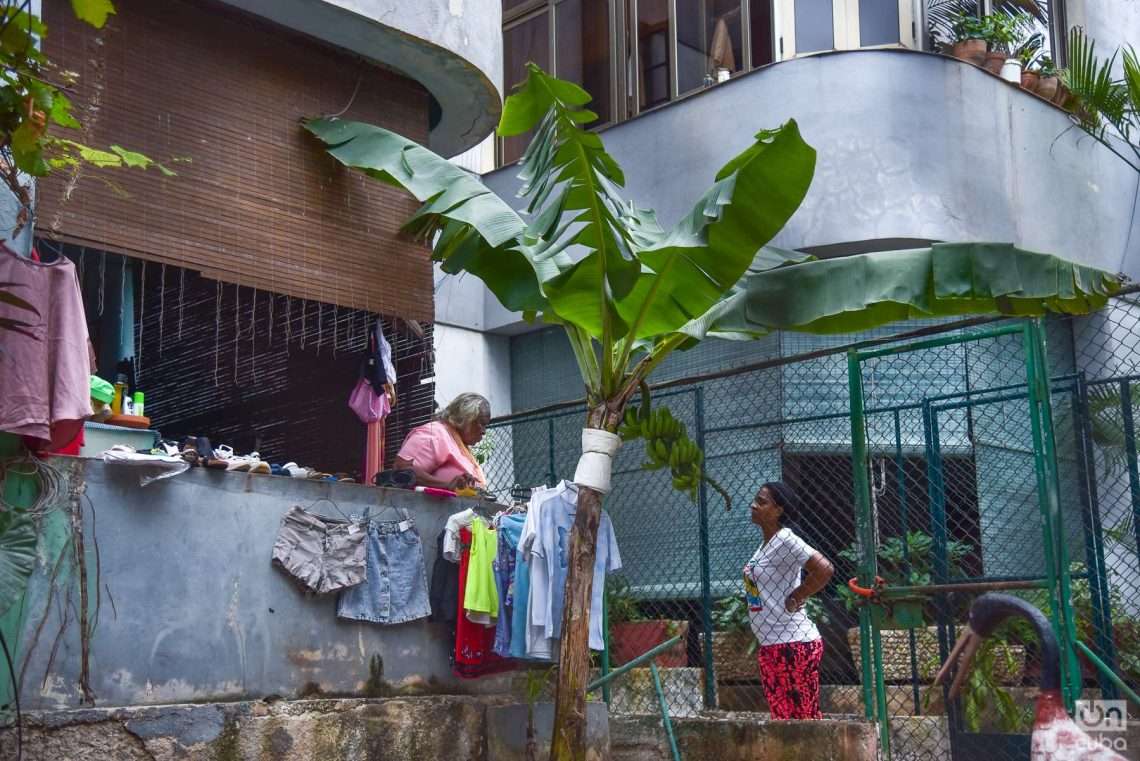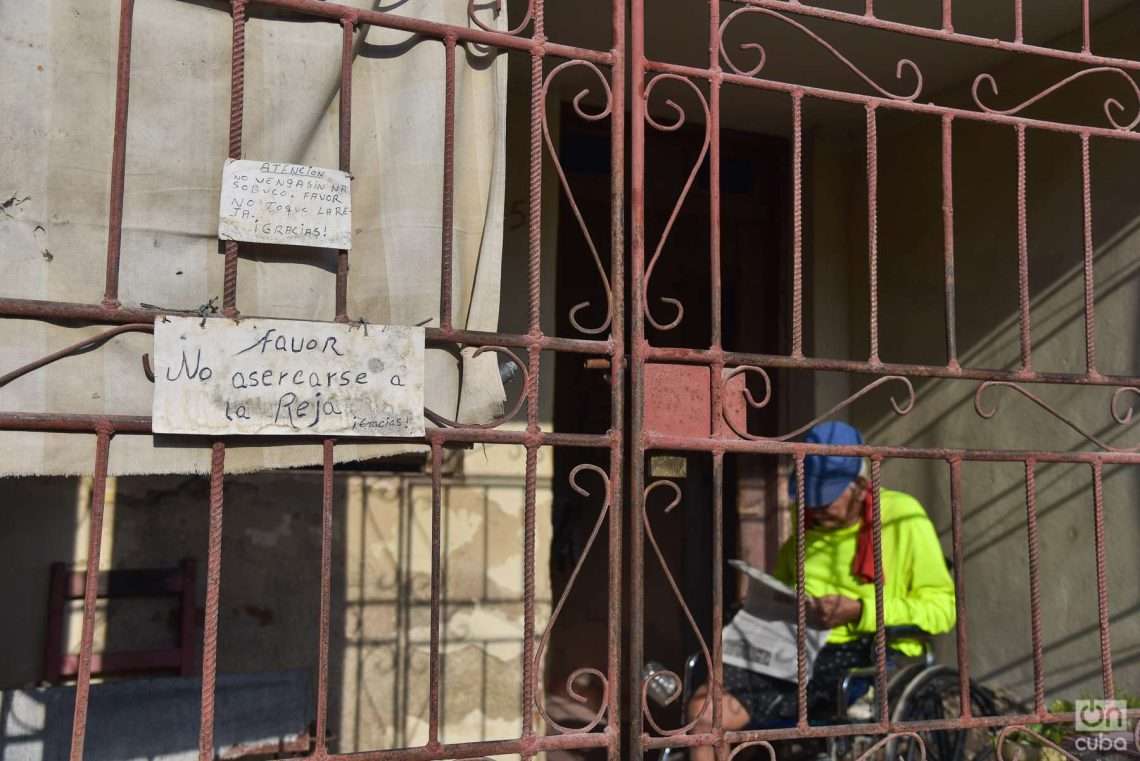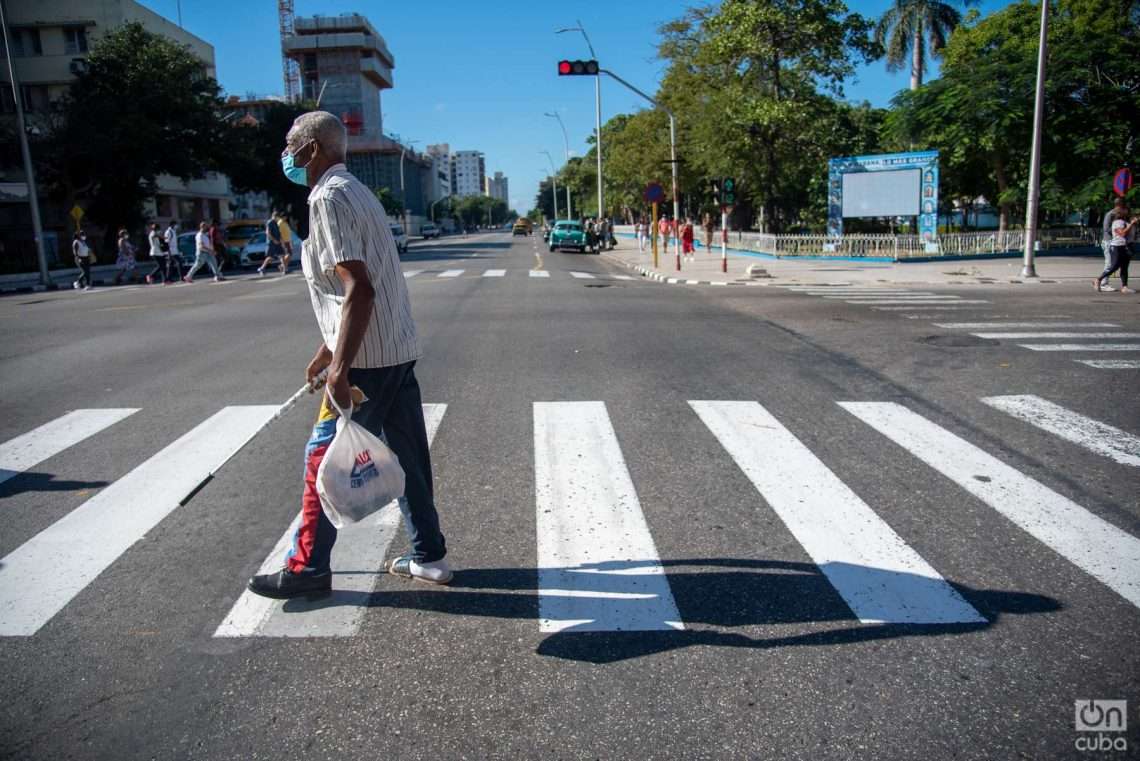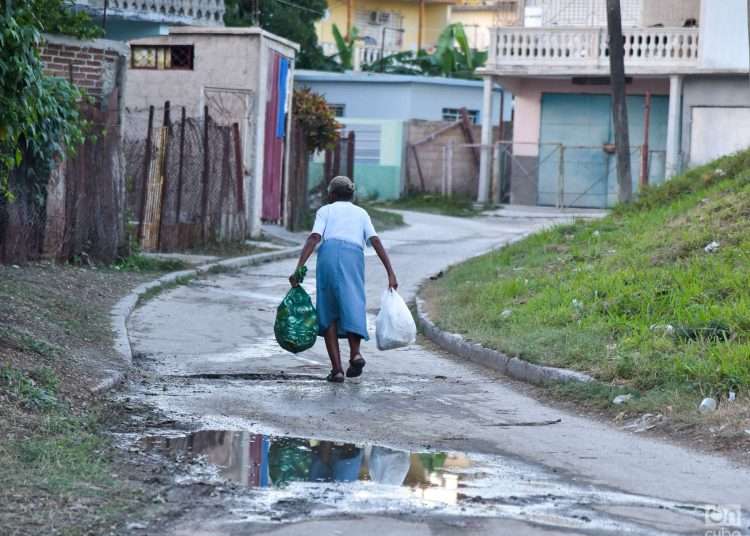Two years ago, Annelys1, a resident of the La Vigía neighborhood in Camagüey, agreed with her siblings to take over the care of the family’s elders. It happened before her younger sister emigrated to Spain to do postgraduate studies. By then, the eldest of the three siblings had already emigrated to Ecuador, in 2015, and from there he continued on to the United States.
Both agreed to help Annelys financially to care for the bedridden maternal grandparents and the parents of the three.
In 2022, at age 89, Annelys’s maternal grandfather died. Meanwhile, her grandmother’s physical condition continued to deteriorate. She would end up losing awareness of reality because of Alzheimer’s. Annelys’s parents, the primary caregivers for the elderly, have their own afflictions. Her father is a prostate cancer survivor, and her mother deals with circulatory problems and high blood pressure.
It seemed logical for Annelys, who lived a couple of blocks from her parents, to be in charge of helping them. Especially since one of her immediate plans did not include emigrating. “My husband and I were clear that we were not going to subject the children to the madness of the journey with the coyotes. If we traveled it had to be legal, leaving and arriving by plane. I also did not agree with him going ahead and after a few years trying to claim us. I have seen very few marriages survive that separation,” she explains.
Things changed last January with the entry into force of the new parole program to emigrate to the United States. Annelys’s father-in-law, a U.S. citizen, offered to sponsor the family so they could travel to the United States. She hesitated for weeks before raising the possibility with her parents. Even after doing so, getting their “go-ahead” and completing the bureaucratic process, waiting only for the final clearance to leave, she has a hard time coming to terms with the idea.
“They told me I can’t put my life off, but to a certain extent, the feeling I have is that I’m leaving them alone for who knows how long,” she confesses.
Cubans in times of “parole”: the island’s new migratory experience
As the young leave
“The Cuban migrant population continues to be concentrated at young ages. It is true that people of all age groups migrate, but the bulk of this migration continues to be a population in the productive and reproductive ages, between 19 and 49 years of age; with a growing female presence, and also with high levels of qualification.”
This is explained by a study by the Center for Demographic Studies presented during the Strategic Scenarios conference, organized at the end of 2022 by the Center for International Policy Research in Havana.
The current migratory scenario is the least desirable for a country in a frank demographic crisis, in which by 2030 a third of the population will be 60 years of age or older.
If the forecasts come true, by those dates the number of elderly people will be 27% greater than that of children and adolescents, and almost double that of young people between 19 and 34 years of age. A study prepared in 2015 by the National Office of Statistics and Information (ONEI) already anticipated significant data: of the 3.2 million older adults who will live in Cuba in 2030, around one million will be 75 years of age or older. Between 2015 and 2030 this last age group could grow by around 8%, while the general population, in the best of cases, will remain without great changes.

The “75-year-old border” is not commonplace, says an article by researchers Jesús Menéndez, Adyalis Guevara and Liliana Rodríguez, published in March by the Temas magazine, which describes how the need for help for daily living increases exponentially as of that age.
During the National Survey on Population Aging in Cuba, carried out in 2017, 27.3% of the elderly consulted reported some degree of dependence on family, friends, neighbors, or institutions. 7.6% stated that they needed help to carry out basic activities. “The unsatisfied demand for care and support systems for families seems to act as an inhibitor to start new projects for 86.7% of the population aged 60 and over,” adds the group of authors.
These are data that coincide with international trends. A manual for the care of the elderly, prepared in 2021 by specialists from the universities of Adelphi and Columbia, in the United States, estimated that “about 38% of people ≥ 80 years and 76% of people ≥ 90 years require a help routine with personal care and household chores.” On average, this assistance requires about 24 hours a week, although for one in five cases, it usually exceeds 40 hours a week.
Contextualized in the Cuban scenario, this proportion leads to an estimate, considering ONEI’s projections, that in 2030 close to 265,000 adults over 80 years of age will need regular care, many of them for a considerable time (those that require between 24 and 40 hours weekly, or more); 15,000 more than those who need them today.

Providing them is, more and more, the task of other elderly or adults about to become so, who have to postpone attending to their own suffering to deal with those of the most vulnerable people in their care.
A few weeks ago, the case of a 74-year-old woman in Havana who cares for her son with intellectual disabilities was widely discussed on Facebook. Faced with the danger of an attack by the young man, she had requested help from official institutions to admit him to a hospital. Her claim had met with formal responses but no concrete help: “Exhausted from resorting to social workers, the Ministry of Public Health and the relevant government institutions that are very attentive but do not solve my problem,” she said on Facebook.
There are many similar stories that are not disclosed on the Internet. The elderly have been one of the most impoverished population segments due to the bizarre economic architecture of the Task of Reorganization. The “design” of the reform started from a nominal increase in pensions that actually hid the drop in their real purchasing power.
The last 15 years in the life of any Cuban who celebrates his or her 70th this year have been plagued by upheavals or true economic catastrophes. In 2009, this typical citizen had to get used to the idea of working five more years than he had initially thought, due to the entry into force of the new Labor Code; in 2010-2011, already on the verge of retirement, he faced suitability processes that eliminated thousands of positions from state payrolls; and, after January 1, 2021, he had to readjust his budget to the reality of a less than minimum wage pension.

“Cuba has around 1.6 million retirees, and of them, more than half receive the minimum pension [… they are an] example of the most vulnerable segments,” former Minister of Economy and Planning José Luis Rodríguez observed in March 2022, quoted by the Cienfuegos newspaper Cinco de Septiembre.
The same report includes a dramatic acknowledgment by the director of the National Security Institute in Cienfuegos, Lino Pérez Díaz: “We are aware that, with today’s exorbitant prices, the minimum pension does not meet the needs of retirees.”
Less state protection
In 2000, nursing homes throughout the country had 8,312 places for interns and 4,880 for semi-interns. In 2021, the number of both types of capacities had dropped to 8,045 and 1,093, respectively.
The magnitude of the contraction can only be assessed by taking into account that in the same period the population over 60 years of age increased by 750,000 individuals. While in 2000 there were 507 places in homes for the elderly for every 100,000 of these people, in 2021 that proportion had dropped to 336 (one-third less); the quotas for daytime stays suffered a more pronounced reduction: from 298 to 46 per 100,000 potential beneficiaries (six times less).
The Family Care System (SAF) is experiencing a similar process. The number of people receiving their services has not changed since 2016.
In January 2021, the 1,425 dining rooms of this type in the country prepared food for 76,176 diners, 47.7% of whom were retirees, according to a note by Cubadebate. In many establishments, half of those registered had stopped attending after the application of the Task of Reorganization.

“Nothing justifies the fact that on January 1 someone charging 30 pesos for a lunch would have appeared in one of those places,” denounced the then head of the Commission for the Implementation and Development of the Guidelines, Marino Murillo Jorge, at a Mesa Redonda TV program. However, the fact was that an average menu had come to cost between 8 and 13 pesos, while before the economic reform the most expensive offerings — with chicken or pork — did not exceed 2.50 pesos.
The issue led to extensive coverage in the unofficial press and statements by officials who promised to ensure the quality of food and reduce the cost of menus as much as possible. It was a passing interest. After two years, the daily life of the SAF can be summed up in three negative sentences: they neither increased the number of their beneficiaries, nor improved the quality of their menus, nor lowered their prices.
What did happen was the return of “lost” consumers, as I was able to verify by asking in various SAFs in Camagüey, which ended up accepting that they would not find a similar offer in other places.
This is not the case of Annelys’s parents who, although far from their children, at least have financial help from abroad to cover their basic needs. That was one of the arguments they used to convince the young woman of the advisability of emigrating: “others are worse off.”
Resignation, however, you want to look at it. Perhaps that is a common gesture in the aging Cuba of the future.
________________________________________
Note:
1 A false name was used to preserve the anonymity of the interviewee.










